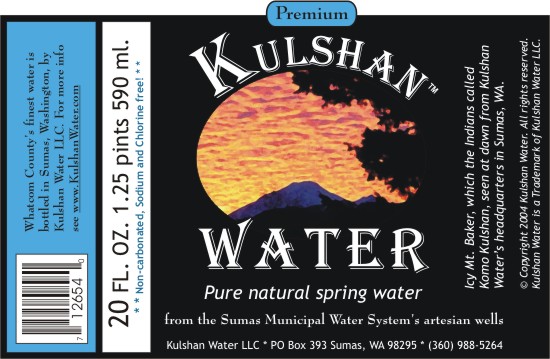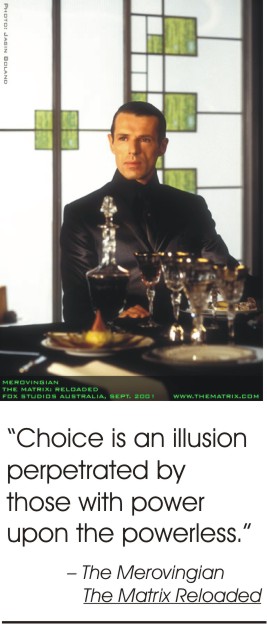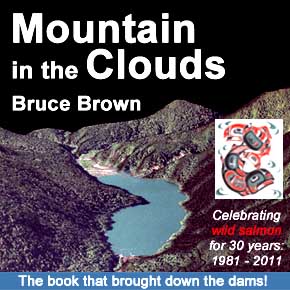 |
| Home * Books * Journalism * Graphic Arts * Video * Store |
The Skinny
|
 |
From the outset, almost everything about the Kulshan Water deal looked very promising. The local company had excellent, inexpensive water, closer to Belligham than any other source; it had the perfect name with a lot of proven local appeal; it had an eye-catching label and marketing plan; it had an eager distributor with real muscle in the Bellingham market. There were even lots of very hip co-promotion possibilities with the local company's other outdoor sport ventures, which are considered a big plus these days in any bottled beverage's promotional plan.
In the end, we had a mamouth, staggering checklist with "Yes" by every item but three:
1) Access to consumers -- During due diligence I discovered that even with a reputable and enthusiastic distributor, a local bottled water could only hope to get on the shelves in maybe 20 percent of the local outlets that sell bottled water. The reason for this is two-fold.
In many convenience stores -- where Coke and Pepsi are very strong -- The Big Two lock out all water competition with exclusive contracts. Even the local Nooksack Valley High School here has an exclusive contract with Coke for all its beverages. These deals are classic examples of illegal restraint of trade through tying contracts between buyers and sellers and are defined as illegal per se by the Sherman Anti-trust Act. But don't hold your breath for the corporation-controlled American government to enforce federal law. This week, President George W. Bush was too busy signing into law an additional $138 billion in tax cuts for our corporate masters.
Meanwhile, in supermarkets -- the other big retail arena for bottled water -- "slotting fees" imposed by the stores frequently prevent superior local products from ever getting on the shelves. According to distributors, it costs tens of thousands of dollars in slotting fees to get an unknown, untried product into a regional supermarket chain. Slotting fees are probably illegal too, since they amount to extortion, with the stores shaking down their suppliers for a bribe as a condition of doing business, but again, don't hold your breath for justice in the "free market economy." It's entertaining to think what would happen if someone like New York State Attorney General Elliot Spitzer was put in charge of enforcing federal anti-trust laws, but the fact is the middlemen and the multi-national corporations rule.
2) Retail split -- Another indication of the middlemen's power in the American bottled water business is the split -- or share -- the bottler, distributor and store each take of the final retail price. Here's how it works. Of that $1.19 you paid for a 20 fl. oz. bottled of water at the C-store or supermarket, the bottler gets around 29 cents, the distributor gets around 38 cents, and the store gets 52 cents. That's roughly 25 percent for the manufacturer, and 75 percent for the middlemen. Suffice it to say that it is very difficult to make as profit in ANY business where you only get 25 percent of the retail price of your product.
3) Price structure -- The bottled water market is in fact growing rapidly, as all the news stories keep babbling, but production capacity has grown rapidly too, and right now bottled water prices are very soft. Those hip young consumers in the bottled water department see deep discounts all over the shelf these days. I recently saw Aquasani at $2.50 for a six pack of 20 fl oz bottles, which amounts to 40 cents a bottle and is not just below not the store's cost, but quite likely below Aquafina's cost of production, transportation, promotion, etc.
Why is Aquasani, excuse me Aquafina, doing this? Well actually, it's being done to them. Bottled water prices are under assault all across the board from generic or house brand waters, which are exempt from the slotting fees since the supermarkets don't charge themselves slotting fees. Here in the Pacific Northwest, a great deal of generic water production is being cranked out by big regional bottled water operators like Advanced H2O (formerly Cascade Clear) who bet wrong on large investments in high capacity equipment, and now must do low margin job-work for the supermarket chains to keep their production lines fully operational.
Advanced H2O does this even though it means driving down bottled water prices and throwing itself into the high volume, low margin pool with guess who... Coke and Pepsi. Oh oh! This summer when I talked to Bob Abramowitz, CEO of Advanced H2O, he sounded scared, and he should. He's in a position roughly akin to big regional breweries like Rainier Beer and Olympia Beer in the 1980s, just before they grew themselves to death and their carcasses were picked clean by the big national beers and the little micro-breweries.
Clearly a shakeout is in progress in the bottled water business. But what about when it's over? Will bottled water prices rebound then? I asked several beverage industry insiders this question, and their reply was pretty much, "look at history. There used to be a zillion soft drink companies. Now there's only two. And what happened to prices? They're incredibly low. Bottled water prices won't be coming up any time soon."
 SO HERE'S the deal. We've got this truly amazing, wonderful who-ha product that people absolutely have to have -- they literally can't live without it -- and the only problem is that we can't get into three quarters of the local stores and we have to give away three quarters of the retail price to the middlemen. Oh yea, prices are soft. Expect them to hover around the cost of production for a generation or two.
SO HERE'S the deal. We've got this truly amazing, wonderful who-ha product that people absolutely have to have -- they literally can't live without it -- and the only problem is that we can't get into three quarters of the local stores and we have to give away three quarters of the retail price to the middlemen. Oh yea, prices are soft. Expect them to hover around the cost of production for a generation or two.
Would you place a big bet on this sort of a prospect? I wouldn't, and neither would the investors in Kulshan Water. Score another victory for Coke, Pepsi, and the Merovingian.
-- Bruce Brown
January 2005
© Copyright 1973 - 2020 by Bruce Brown and BF Communications Inc.
Astonisher and Astonisher.com are trademarks of BF Communications Inc.
BF Communications Inc.
P.O. Box 393
Sumas, WA 98295 USA
(360) 927-3234
Website by Running Dog ![]()







